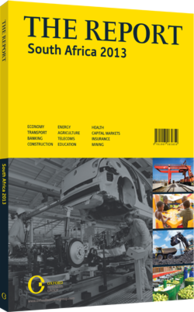OBG talks to Riaan Stassen, Chief Executive, Capitec Bank

Interview: Riaan Stassen
How do you assess the progress the country has made towards financial inclusion?
RIAAN STASSEN: Good progress has been made, with South Africa’s financial inclusion rate measured at a 67% for 2012, which is well above any other African country. Financial inclusion receives a lot of focus from politicians, however, their current definition is perhaps too narrow in that it focuses predominantly on the ability of someone accessing savings and investment products. There is a concentration of workers in urban areas sending money home to rural areas, and banks are working with retailers to offer easy money transfers in a well-organised and safe way. As this addresses a real financial need of a number of South Africans, the ability to move money safely through formal channels should also be considered as contributing to inclusion. Another achievement that is not being measured well is the payment of social grants. Five years ago, these took place 100% in cash, whereas today it is probably in the region of 70% non-cash. All in all, more money is being moved through formal and safe channels.
Are opportunities in virtual banking reducing the barriers to entry for new players?
STASSEN: Establishing a new bank is complex process. People expect national distribution and international connectivity before they open a bank account, which requires huge investments in technology and distribution. While there might over time be a reduction in the need for bricks and mortar, virtual banking on its own will not succeed. People still need face-to-face contact. One challenge with virtual banking, where mobile phones are a key tool used to communicate and transact, is that you become hardware-dependent and need to ensure that applications can offload to any type of phone. A lot of development time needs to be spent to ensure the compatibility of applications to mobile phone technology, which requires capital and resources. A second and even bigger challenge is that you still need to cement a relationship with the customer in the way you communicate with them as otherwise you lose your banking identity. You have to work hard to ensure that virtual banking is as close an extension as possible to face-to-face contact. While technology can drive delivery and reduce complexity, the advantages to be gained through establishing rapport with customers by recruiting a strong staff force is a challenge.
To what extent do you feel that concerns about growth in unsecured credit are warranted?
STASSEN: The concern being expressed is based on what took place in the US subprime market, where the regulators realised too late that a rapid expansion of subprime mortgages contributed to the financial crash. It is dangerous to take global phenomenon and apply it to South Africa without understanding the impact of the apartheid legacy. Our conditions are different to the rest of the world, and credit is one key example.
In the US and Europe the value of a home as an asset to borrow against is easy to assess. In South Africa, a large portion of the population lives in townships and rural areas. Regarding the latter, many have built homes on tribal lands where there are no housing deeds, and in townships many people live in government-supplied homes or self-erected housing. It is difficult and uneconomical to do a valuation on some of these properties as they were constructed informally. Separately, many townships have homes worth R2m ($243,800) on the same street as R150,000 ($18,300) shacks, so you cannot estimate value based on catchment averages.
When people lack measurable assets they can borrow against, the only alternative is to fund individuals using unsecured instruments based on your ability as a bank to determine the quality of customer cash flow.
It is central to the future of South Africa that credit providers develop the right tools to measure sustainable repayment by the market. The process we are going through now, which might appear to some observers as a credit bubble, is really one of the restructuring of the balance sheets for most South Africans.
You have reached the limit of premium articles you can view for free.
Choose from the options below to purchase print or digital editions of our Reports. You can also purchase a website subscription giving you unlimited access to all of our Reports online for 12 months.
If you have already purchased this Report or have a website subscription, please login to continue.

